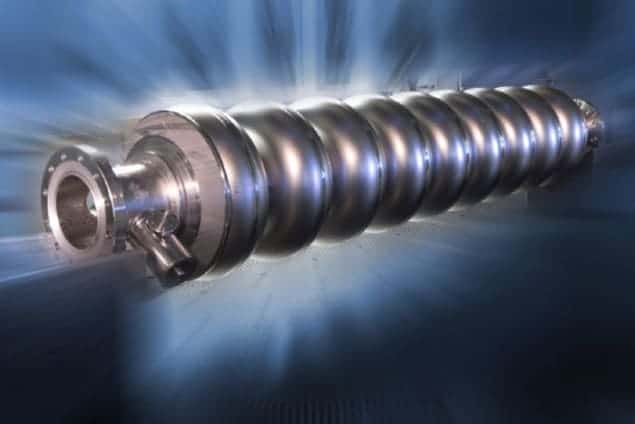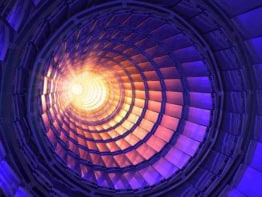
Particle physicists in Asia and Oceania have issued a joint statement calling for the construction of the International Linear Collider (ILC), describing the proposed design as “the most promising electron–positron collider to achieve next-generation physics objectives”. The announcement also backs Japan’s intention to host the facility and comes less than two weeks after Japanese physicists announced their location of choice for the ILC. Together, these announcements make it look increasingly likely that the next major particle-physics experiment after CERN’s Large Hadron Collider (LHC) will be built in Japan rather than Europe or North America.
The statement comes from the Asia-Pacific High Energy Physics Panel (AsiaHEP) and the Asian Committee for Future Accelerators (ACFA). AsiaHEP comprises particle physicists in Australia, China, India, Japan, Korea and Taiwan, while ACFA promotes accelerator facilities in Asia, Oceania and the Middle East.
If built, the ILC will be about 30 km in length and will smash electrons into positrons at energies of about 500 GeV. While this is only about 4% of the collision energy planned for the next run of the LHC, it is more than enough energy to create the Higgs boson – which was discovered last year at the LHC with a mass of about 125 GeV/c2. What is more, ILC collisions would produce far less unwanted debris than the proton–proton collisions in the LHC. This should allow the linear collider to make very precise measurements of the properties of the Higgs and other subatomic particles.
CLIC versus ILC
There are currently two competing designs for a next-generation electron–positron linear collider: the ILC and the Compact Linear Collider (CLIC). While the ILC is based on established superconducting accelerator technology, CLIC aims to use a newer two-beam acceleration concept. The latter involves using a high-current electron beam that runs parallel to the main beam. Radio-frequency energy is extracted from this beam and sent to accelerating structures that drive the main electron and positron beams. According to CLIC supporters, the design could achieve collision energies as high as 3 TeV for a 48 km collider – although a shorter, less-energetic collider is also possible.
As well as choosing the ILC over CLIC, the AsiaHEP/ACFA statement also backs plans announced on 23 August by Japanese particle physicists to build the ILC in the Tōhoku region about 400 km north of Tokyo. The 50 km route under the Kitakami mountains was selected over an alternate location at Sefuri on the island of Kyushu. Initially, Japanese physicists hope to build a scaled-down version of the ILC that will create 250 GeV collisions – which is enough energy to study the Higgs. This would then be upgraded to 500 GeV and ultimately 1 TeV. The proposal is backed by KEK – Japan’s High Energy Accelerator Research Organization – which earlier this year said it wanted to begin operation of a Japan-based ILC in the 2020s. However, the Japanese government and others worldwide have yet to guarantee the money needed to build such a massive facility.



